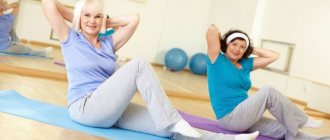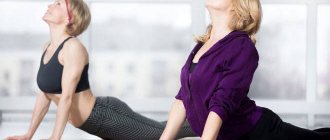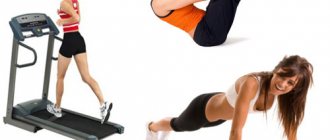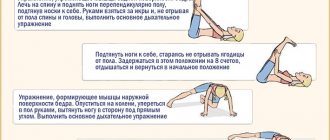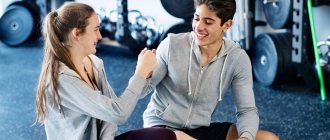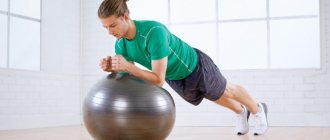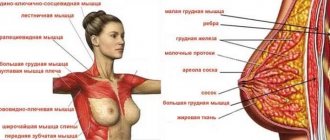11/20/2020 Physical activity is an integral part of every person’s life. This has always been the case. Even primitive people were constantly on the move and developed their physical skills to survive in harsh conditions. A lot of literature is devoted to daily exercise. Even in cartoons you can see episodes where the main characters do exercises. This allows you to get used to mandatory exercises from an early age.
The peak of physical activity usually occurs in adolescence. After reaching the age of forty, a person begins to lead a more sedate lifestyle, and by the age of fifty, as a rule, any sports activities are excluded. This has an extremely negative effect on the body and causes a number of diseases. After spending time passively, people begin to quickly get tired, muscles weaken, posture disorders and other negative consequences are observed.
Even a basic set of exercises has an extremely positive effect on the body of an elderly person. This is physiology, proven by many years of research. You can do some basic analysis. Just look at a person who led a passive lifestyle and those who played sports. At the same age, they will have completely different appearance and health status. Decreased activity provokes premature aging due to weakening muscles. It is worth noting that it is never too late to start doing exercises. Even older people can improve their well-being and look at life in a new way, thanks to a set of simple exercises.
With regular exercise, serious changes begin to occur in the body, including:
- improved blood circulation;
- improved posture;
- strengthening the nervous system;
- excess weight loss;
- normalization of metabolism;
- improving motor skills.
This is just a short list of the positive effects that proper performance of special exercises has for older people. In addition, breathing problems disappear, the immune system is strengthened, the skin becomes more elastic and chronic fatigue disappears. Such changes can radically change the life of an elderly person for the better.
It is necessary to start doing physical exercises as early as possible. The fact is that people who lead a sedentary lifestyle are more susceptible to various diseases. As a result, problems with the heart, joints, and so on may appear. A person burdened with a large number of physical problems will not be able to exercise and be active due to many contraindications. Thus, a vicious circle is obtained. You need to take care of yourself and avoid such situations. Standard exercises that don’t take much time but provide amazing results will help with this.
Even older people who are bedridden can do certain exercises under the supervision of relatives or healthcare professionals. In addition, for this category of people, exercise can be a real salvation. In everyday life, we do not notice how many different exercises we have to perform during the day. This manifests itself in trips to the store, climbing stairs, squats and other manifestations. People who are forced to spend most of their time in bed due to health conditions do not have this opportunity. Because of this, they may develop bedsores, sepsis, thrombosis and other troubles. In this case, medications are powerless. Only light exercises performed with the help of third parties can save the situation.
Some people love to dance; this type of activity is also welcome and has a beneficial effect on the body. However, in this article we will talk about standard exercises that will strengthen your muscles and restore vitality to your entire body.
Possible contraindications
There are very few contraindications for morning exercises. The fact is, this is not professional sports, where you need to be subjected to grueling loads every day, break records and meet the set time. Exercise only tones the muscles and prevents them from weakening and atrophying. When performing it, you can take breaks, as well as control the time of classes and their volume, which is selected individually. Charging is not recommended for older people in the following cases:
- severe dizziness and weakness;
- various fractures and cracks;
- acute viral diseases in the acute stage;
- bleeding and joint damage;
- increased body temperature;
- infectious diseases;
- recovery period after illnesses.
It is worth noting that in such conditions an elderly person will not be physically able to do exercises. Therefore, it is very difficult to harm your body in this way. To get more accurate recommendations, you need to consult a doctor who can professionally assess your health status and draw appropriate conclusions.
Features of physical exercise
To achieve a positive effect, the presence of two important factors is necessary. First of all, you need to choose for an elderly person exactly those exercises that will benefit him. This will require consultation with your doctor. The second important factor is taking initiative. An elderly person should not be forced to do exercises or other physical exercises. He himself must show desire and enjoy it.
In old age, exercises should be performed under the supervision of relatives or doctors. In doing so, observers should keep the following recommendations in mind:
- If an elderly person is tired or performs exercises with great effort, the exercises must be interrupted.
- The entire process should take no more than ten to twenty minutes. There is no need to overload the human body in old age, this can lead to negative consequences.
- It is recommended to do exercises in the morning, before eating, in a well-ventilated area.
- It is necessary to carefully monitor breathing; shortness of breath and heavy strain on the heart should not be allowed.
When selecting exercises, it is important to take into account all health characteristics and damaged parts of the body. This is done to ensure that the exercise has a positive effect and does not cause pain.
Contraindications and precautions
When an elderly person strives to lead an active lifestyle, it is necessary to monitor the uniformity of loads when performing exercises. This is necessary due to some characteristics of the body at this age:
- there is a slowdown in metabolic processes;
- the concentration of breakdown products in the body increases, which causes rapid fatigue;
- the shape of the skeleton changes;
- high tone is observed with a simultaneous decrease in muscle mass;
- gait changes due to a shift in the center of gravity;
- insufficient blood flow can affect the vestibular system;
- the lungs are not filled enough;
- the heart muscle is transformed;
- the range of rotation of the eyeballs narrows.
Each of these age-related changes can work in tandem with different types of pathologies. Gymnastics for older people should be performed under the supervision of a professional who will control breathing (voluntary inhalation should alternate with deep exhalation, without any tension). All exercises are performed smoothly, at a pace convenient for the practitioner. For prone exercises, older adults are advised to place a pillow under their head to prevent blood flow to the brain.
Gymnastics for older people should be performed taking into account certain rules:
- Blood pressure and pulse are measured (before and after exercise). If the pulse rate of an elderly person is higher than the maximum permissible value, then an individual load level is selected for him.
- Training time should not exceed 20–30 minutes a day, 2–3 times a week.
- It is allowed to vary the starting position, but standing exercises should not prevail over the others.
- It is recommended to do all movements smoothly and slowly, excluding quick sharp bends and turns.
- The list of mandatory exercises should include exercises that restore the vestibular apparatus.
- Try to avoid exercises that increase the likelihood of falls. In old age, this can lead to limb fractures.
- Gymnastics can only be beneficial when a person feels good. In other cases, the training should be rescheduled.
There are also contraindications for health-improving physical education:
- Pathologies of internal organs during an exacerbation, accompanied by depression of their functionality.
- Aneurysm of the heart and large blood vessels.
- Mental disorders characterized by memory lapses, problems with orientation in space and time, strange reactions to various situations.
- Urinary incontinence.
- Amyotrophy.
- Dystrophic changes in bone and joint tissues.
In addition, you should not do gymnastics at high temperatures, during periods of acute pain, during inflammatory processes, or in the presence of internal bleeding.
Health-improving gymnastics for older people aged 70 years and older is performed individually, under the supervision of a health professional.
We recommend
“Why blood pressure drops in older people: causes and treatment” Read more
Where to start charging
First of all, you need to remember that the health of an elderly person and the reserve of strength are much weaker than in adolescence. Therefore, it is important not to harm and control the functioning of all body systems. Particular attention should be paid to breathing and heartbeat.
In order for the body to gradually warm up and not experience sudden stress, you should start charging with a light warm-up. The best option is walking. If the room is too small, walking in place is allowed. After this, you can move on to bending and so on. In the first days, it is enough to limit yourself to one type of exercise to prevent muscle fatigue and the appearance of microcracks. The number of repetitions can be increased every day. Periodically you need to take breaks to rest and monitor your heart rate. If your health condition worsens, you need to limit physical activity.
Chinese practices for the elderly
Another excellent way to prevent diseases is Chinese tai chi exercises for older people.
The popularity of these ancient sets of exercises is not accidental. Tai chi helps slow down the aging of the body and prevent age-related diseases. In addition, regular gymnastics can improve all body systems:
- normal functioning of the central nervous system is restored;
- joints become more flexible and mobile;
- immunity increases;
- the functioning of the digestive system improves;
- coordination is restored.
If you do exercises on a regular basis, your muscles become stronger, and colds appear less and less often. Interestingly, Chinese tai chi gymnastics for older people does not involve any serious stress on the body. The workout can be done while sitting on the bed. The main thing is to wear clothes that make you feel free. The elderly person chooses the amplitude and number of repetitions of the exercises independently.
- Sitting on your mat (or bed), cross your legs and place your hands on your knees. Take about 15–20 breaths. At the same time, you need to exhale longer (in time) than inhale. With each inhalation, the stomach should protrude, and with each exhalation, it should retract.
- Puffiness of the cheeks. Do about 40 times at an average pace.
- Rub your left shoulder with your right palm. Do the same with the other hand. Perform about 20 repetitions for each shoulder, gradually increasing the pressure.
- With your hands on your hips, rotate your torso in the lumbar region. The amplitude should gradually increase and then gradually decrease. Perform about 20 turns in each direction.
- Move your hand in spiral circles clockwise on your stomach with little effort. It is recommended to perform this exercise in the direction from the navel, gradually increasing the diameter of the imaginary circle. Once you reach the edge of your belly, begin to taper your movements. Repeat the exercise 30 times with each hand.
No less popular is Chinese gymnastics for older people - qigong. It helps to prolong the viability of all body systems. Regular qigong classes allow you to master control over emotions and breathing. In fact, this type of health-improving gymnastics is an excellent way to relieve stress and improve the quality of life for older people.
Qigong gymnastics is interesting because it contains a sufficient number of exercises performed in a sitting position, including on a bed. The remaining movements are performed while standing.
- While sitting, perform 50 leisurely inhale-exhale cycles through your nose. As you exhale, mentally direct the flow of Chi energy in front of you.
- Massage your knees with circular movements of your palms (100 times). At the same time, it is important to feel the influx of energy. In the same way, massage the chest and abdomen, making 20 movements with each hand.
- Stand in a position where your feet are shoulder-width apart and your hands are on your waist. Bend alternately in each direction 10 times, then perform the same number of bends forward and backward.
- In the same position, lift your leg bent at the knee and, tensing your thigh muscles, extend it in front of you. Returning to the starting position, do the same action with the other leg. As a result, you need to perform 10 movements with each leg.
We recommend
“Vitamins for elderly people over 70: which ones are needed first” Read more
Several exercises for older people
There are a huge number of types of morning exercises, and most of them are well suited for older people. All exercises are aimed at a specific muscle group and allow you to achieve different results. In addition, they differ in purpose and allow you to normalize your health: eliminate problems with constipation, normalize blood circulation, strengthen joints and muscles. This block will discuss general strengthening exercises that affect the entire body.
- "Toe to toe"
You will need a chair for this exercise. You need to sit down with your back straight. The exercise is performed in counts of up to four. At one time, the left leg is crossed over the right. On two feet the leg returns to its original position. After this, for three or four, similar actions are performed with the right leg.
- "Dragonfly"
The exercise must be done on all fours. First, the left hand is extended to the left side, after which it returns to its original position. Next, do the same with the right hand. While performing it, it is important to monitor your balance so as not to fall and get injured.
- "Wings"
We sit on a chair and put our hands on our knees. At one time we spread our arms to the sides and raise them up. On two we return to the starting position. At three we bend forward. You can do up to five repetitions.
- "Rotation"
We clench our hands into fists and begin to rotate our wrists, first in one direction four times, then in the other. Exercise develops joints well and prevents salt deposits.
- "Shoulder Rotation"
We place our feet shoulder-width apart and take a stable position. We place our hands on our shoulders and begin slow rotations, first in one direction, then in the other. Thus, the muscles of the back and shoulders are strengthened.
- "Letter T"
We sit on a stable chair, straighten our back and place our hands on our knees. Next, we raise our hands to our shoulders and spread them apart, forming the letter “T”. After this, we return our hands to our knees and repeat the exercise several times.
- "Dog"
We take a position on all fours, resting our palms firmly on the floor. On count one, we bend the spine to the right, on count two, we bend it to the left. This exercise is contraindicated for older people with a back injury.
- "Star"
You need to lie on your back, straighten your legs, while your arms lie along your body. At one time, we move our left arm and right leg to the sides. On two - we return to the starting position. At three, we move our right arm and left leg to the side.
These exercises can be combined, selecting the optimal number of repetitions and rest breaks. The complex of physical activity should correspond to the testimony of specialists and personal preferences.
- Exercises with a stick
When charging, additional items are often used. Below we will look at a number of useful exercises with a stick.
- "Lever arm"
We sit down on a chair. One end of the stick rests on the floor and is compressed by the feet, the other end is fixed with the palms. Leaning your hands on the stick, bend forward, while trying to straighten your back as much as possible. On the count of two, we slowly return to the starting position. You can do up to six repetitions. Older adults may need help with this exercise.
- "Rolling pin"
This exercise can be performed either standing or sitting. The stick is fixed with the elbows behind the back and slowly rolls along it. The exercise significantly improves posture and strengthens the back muscles.
The benefits of gymnastics for older people
Without movement, muscles become weaker, ligaments and joints lose elasticity. The nervous system also weakens, which, with age, finds it more difficult to control the motor system. The gait of older people becomes “shuffling” and stooping appears.
Doing morning exercises every day is the best prevention of many age-related diseases. And from the point of view of benefits for the body, this habit is superior to any medicine. It is enough to follow certain rules and practice regularly. This will strengthen the nervous system, blood vessels and heart muscle. Your weight will drop, your metabolism will improve, correct posture will be restored, you will be more energetic and have a work ethic.
A well-designed gymnastics complex for an elderly person can normalize respiratory functions, improve the flow of blood and lymph through the vessels, and increase immunity.
Some people perceive exercise as some kind of rhythmic movements accompanied by energetic music. Yes, this option is acceptable if the body is ready for such stress. But we are talking about a calmer version of gymnastics, aimed at working out joints and muscles, which is feasible for any elderly person.
In fact, health-improving gymnastics for older people is a way to maintain all the functions of our body. It serves as a kind of buffer that slows down aging. The benefits of regular exercise for older people are undeniable:
- The nervous system is restored.
- Metabolic processes are normalized (which is important for older people).
- The heart and blood vessels are kept in good shape, the respiratory system is trained.
- The activity of the musculoskeletal system improves and the likelihood of osteoporosis decreases.
- The body becomes less prone to constipation and venous thrombosis.
- The immune system is strengthened and the overall tone is increased.
- An optimistic mood appears.
Morning exercises for older people are an excellent way to improve brain function, prevent age-related atrophy and possible weakening of muscle groups rarely used in everyday life. Also, regular exercise improves the movement of lymph and blood through the vessels, normalizes the functioning of the respiratory system and metabolic processes.
As a result: the body is full of strength and energy, a feeling of satisfaction from the actions performed appears, depression and anxiety disappear, and brain activity improves.
We recommend
“Interests of older people: how to improve the life of a pensioner” Read more
Classic exercise on video
Classic exercises include the most common exercises that have a general strengthening effect on the body. To make it more interesting for an elderly person to perform all the actions and not have to memorize complex movements, it is recommended to perform the exercises before the educational video clip.
You need to select a high-quality video in which the instructor clearly shows and explains how to perform this or that movement. It is important that all movements in the video are performed correctly. Otherwise, you can cause harm to your health and even get injured.
It is worth noting that you should not chase the video. It is important to catch the pace at which charging will be enjoyable and not difficult. You can skip a few approaches, this is not critical. In addition, if you are tired, you need to take a break to rest.
Exercise for joints
Joint problems in older people are a fairly common problem. It significantly restricts movement, causes pain and worsens the quality of life. To relieve unpleasant symptoms, you must perform the following exercises:
- Head tilts forward, backward, right and left;
- Circular movements of the head. Four times in one direction, then in the other;
- Extension and flexion of the palms, as well as smooth massaging of each phalanx of the fingers;
- Stretching your arms out in front of you. It is required to straighten the elbow joint as much as possible. After several days of exercise, you will notice the effect.
- Rotating movements of the feet and hands.
- Bend your knees; with sufficient physical fitness, you can do squats.
Don't rush things and try to achieve the effect in one day. All exercises with joints must be performed smoothly and carefully. If you have complaints about pain, you can reduce the number of approaches and duration of exercise.
Exercise for constipation
Constipation is a common problem for older adults. There are many ways to get rid of this trouble, but they all have significant drawbacks. For example, taking medications can have a detrimental effect on your general condition. Diets are quite exhausting, especially since the body stops receiving all the nutrients. The best solution is to perform special exercises. The most effective of them are:
- Lying on your back, you need to tuck your knees. You can put your hands under your head. Next, while inhaling, bend your knees to the right. We return to the starting position as we exhale. After this, we make a similar tilt to the left.
- Lie on your back and make slight turns with your hips. You need to relax your whole body as much as possible.
- Standing on your knees, we begin to make circular turns, first in one direction, while trying to reach the heel with your hand. Then turn in the other direction. The exercise can be repeated up to ten times.
At first, you need to repeat these steps daily. Once the problem is resolved, two classes per week will be sufficient.
Gymnastics for older people sitting on a chair
But what should older people who already have certain health problems do? Is it possible to perform any exercises when there are contraindications? For such cases, classes are provided in physical therapy groups (physical therapy), which are carried out in a sitting position (on a chair). Such gymnastics for older people can restore the body after illness and maintain physical fitness at the achieved level. Some complexes are prescribed individually, for example: gymnastics for constipation in older people.
In what cases and to whom are physical therapy exercises prescribed to older people:
- during the recovery period after illness, when a person is prescribed semi-bed rest;
- as rehabilitation exercises after strokes and heart attacks, during pulmonary diseases, disorders of the cardiovascular system, when the disease does not allow performing exercises in a standing position or in motion (walking, swimming, exercise bike, etc.);
- during the treatment of diseases such as arthritis, arthrosis and gout;
- for older people with severe diabetes, which causes complications in the legs and heart;
- for those who use a wheelchair (permanently or temporarily).
We recommend
“Leisure time for older people: tips on organization” More In addition
, exercises while sitting on a chair are recommended for very old people, for whom movement itself is difficult. That is, for those who are prescribed bed rest, but a sitting position is not contraindicated. In some cases, exercises for spinal osteoporosis may be useful for older people.
Let's consider a variant of a set of exercise therapy exercises performed in a sitting position:
- The hands are on the knees. At the same time, the fists are compressed with little effort. We do it about 15–20 times.
- We raise one hand up (across the side), trying to reach the opposite ear. We return to the starting position. We do the same with the other hand. Repeat the exercise 10 times.
- We bend alternately in each direction, sliding our hands along the back legs of the chair. Exercises are done as carefully and smoothly as possible, without sudden movements. Perform 10 bends in each direction.
- Rotation of the torso backwards. To do this, grab the back of the chair on one side with your hands, which go down to your knees. Remaining in this position, we rotate the torso as far as possible on the other side of the chair. We do the exercise 10 repetitions.
- Tilt your head alternately to one or the other shoulder. Try to perform the movements smoothly, gently stretching the neck muscles. Do at least 10 repetitions.
- As you inhale, spread your arms out to the sides, and as you exhale, hug yourself tightly. Repeat the exercise 15 times.
- Place your hands on your shoulders and perform circular movements back and forth (at least 10 times).
- Clasp your hands and stretch forward from yourself, straightening your arms at the elbows. Next, return your hands to yourself and relax. Repeat the exercise 15-20 times.
- Leave your hands closed. Try to apply pressure on each hand in turn, straightening your fingers. We also repeat about 15–20 times.
- Without opening the brushes, rotate them, changing sides, using little force. Repeat 15–20 times.
